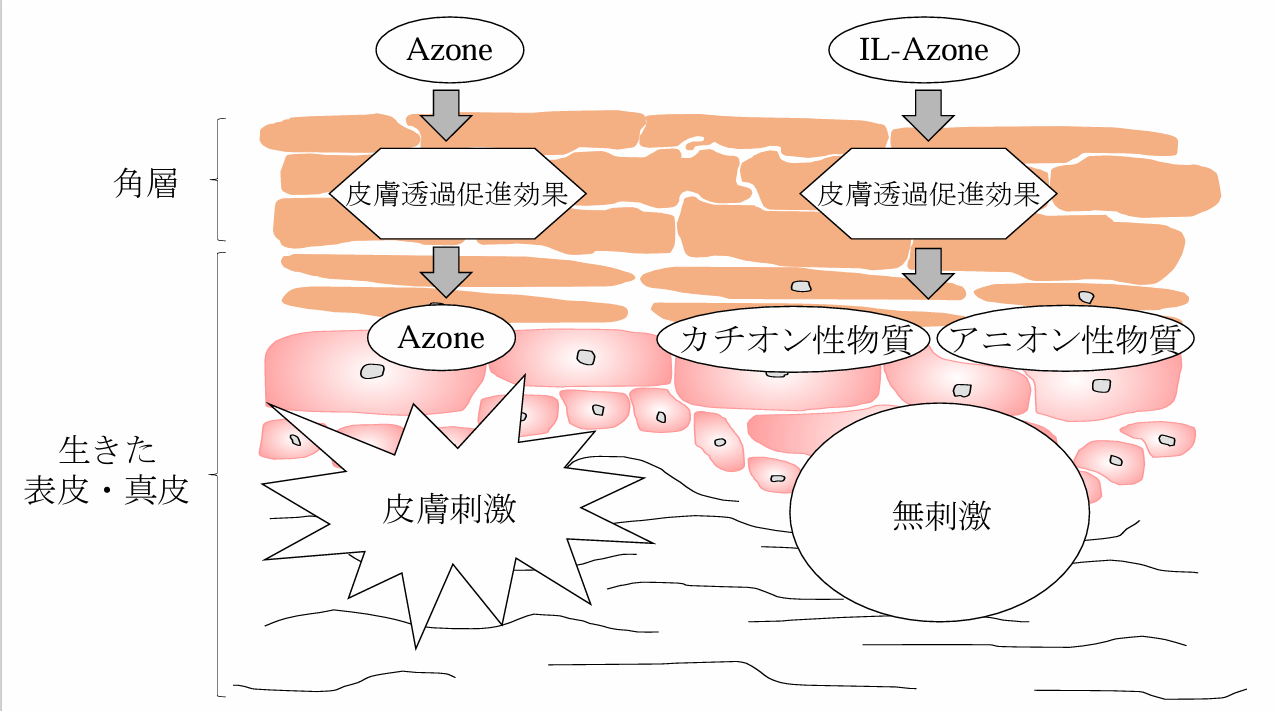JIU Josai International University

Assistant Professor Oshisaka designs a highly safe absorption enhancer to expand the range of applications for drugs applied to the skin
teaching activity
2023.12.25
Research results that lead to an expansion of the range of applications of drugs that can be applied or applied to the skin will be presented at an academic forum held this summer by Assistant Professor Yuji Oshisaka of Faculty of Pharmaceutical Sciences and two papers entitled "Design of an ante-enhancer with an Azone-mimic structure using ionic liquid" ( Published in Pharmaceutical Research, April 2023), "Design of ionic liquid formulations with an Azone-mimic structure for enhanced drug skin permeation" (Journal of Pharmaceutical) published in Sciences in December 2023) and has attracted attention from pharmaceutical and cosmetics companies.
Transdermal preparations are easy to use by simply applying and pasting them on the skin, so they have advantages over oral medications and injections, such as making it easier for not only the patient but also nurses and caregivers to confirm administration. On the other hand, because the stratum corneum that covers the surface of the skin acts as a barrier, it is not suitable for drugs with large molecular weights or low fat solubility, and its range of use is limited. As a solution to these problems, the development of absorption enhancers has been actively promoted since the 1980s, but the existing enhancers (Azone) tend to cause skin irritation after being absorbed under the stratum corneum, causing swelling and swelling. It may cause redness, so it has not yet been put into practical use.
Assistant Professor Oshisaka focused on ionic liquids, which are expected to be effective when applied to transdermal drug delivery systems (TDDS). Ionic liquids, which are composed of cationic substances and anionic substances, have low melting points and remain in a liquid state at room temperature. Converting drugs into ionic liquids improves hydrophobicity, increasing absorption rate and making it possible to dissolve drugs that are difficult to dissolve. Assistant Professor Oshisaka selected ε-caprolactam, a cationic substance, and myristic acid, an anionic substance, and by devising the composition, created an ionic liquid "IL-Azone" with a structure similar to that of Azone. was successfully prepared.
When we tested the effects of IL-Azone on the backs of rabbits (irritation) and the skin of pig ears (permeability), we found that it was less irritating to the skin than Azone. In terms of permeability, when IL-Azone was added to white petrolatum, it was found to have a greater absorption promoting effect than Azone. Furthermore, the inability to use water in the formulation was an issue in expanding the range of applications of IL-Azone, but by using white petrolatum, it was possible to formulate the formulation without using water. It was also successful.
IL-Azone's structure promotes drug absorption in the stratum corneum and decomposes into ε-caprolactam and myristic acid below the stratum corneum without causing irritation, and it is expected to be used not only as a drug but also in cosmetics and supplements in the future. Assistant Professor Osasaka said, "Transdermal formulations are also excellent in that they can deliver drugs to the entire body without being metabolized in the liver like oral drugs. We will continue Research and aim to put it into practical use."
Assistant Professor Osasaka has also achieved results in Research into increasing the stability and permeability of ascorbic acid (vitamin C, VC), which has antioxidant properties and suppresses melanin production in the skin, by converting it into an ionic liquid, which is expected to have applications in the medical and beauty fields.
